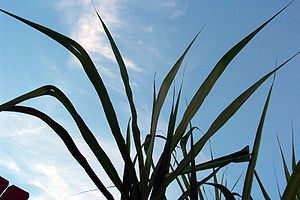
- Image via Wikipedia
Developing biofuel from native perennials instead of corn in the Midwest’s rolling grasslands would better protect threatened bird populations, Michigan State University research suggests.
Federal mandates and market forces both are expected to promote rising biofuel production, MSU biologist Bruce Robertson says, but the environmental consequences of turning more acreage over to row crops for fuel are a serious concern.
Ethanol in America is chiefly made from corn, but research is focusing on how to cost-effectively process cellulosic sources such as wood, corn stalks and grasses. Perennial grasses promise low cost and energy inputs — planting, fertilizing, watering — and the new study quantifies substantial environmental benefits.
“Native perennial grasses might provide an opportunity to produce biomass in ways that are compatible with the conservation of biodiversity and important ecosystem services such as pest control,” Robertson said. “This work demonstrates that next-generation biofuel crops have potential to provide a new source of habitat for a threatened group of birds.”
With its rich variety of ecosystems, including historic prairie, southern Michigan provided a convenient place to compare bird populations in 20 sites of varying size for each of the three fuel feedstocks. Grassland birds are of special concern, Robertson said, having suffered more dramatic population losses than any other group of North American birds.
Related articles
- Study: We’ve Got Plenty of Land for Biofuels (wired.com)









